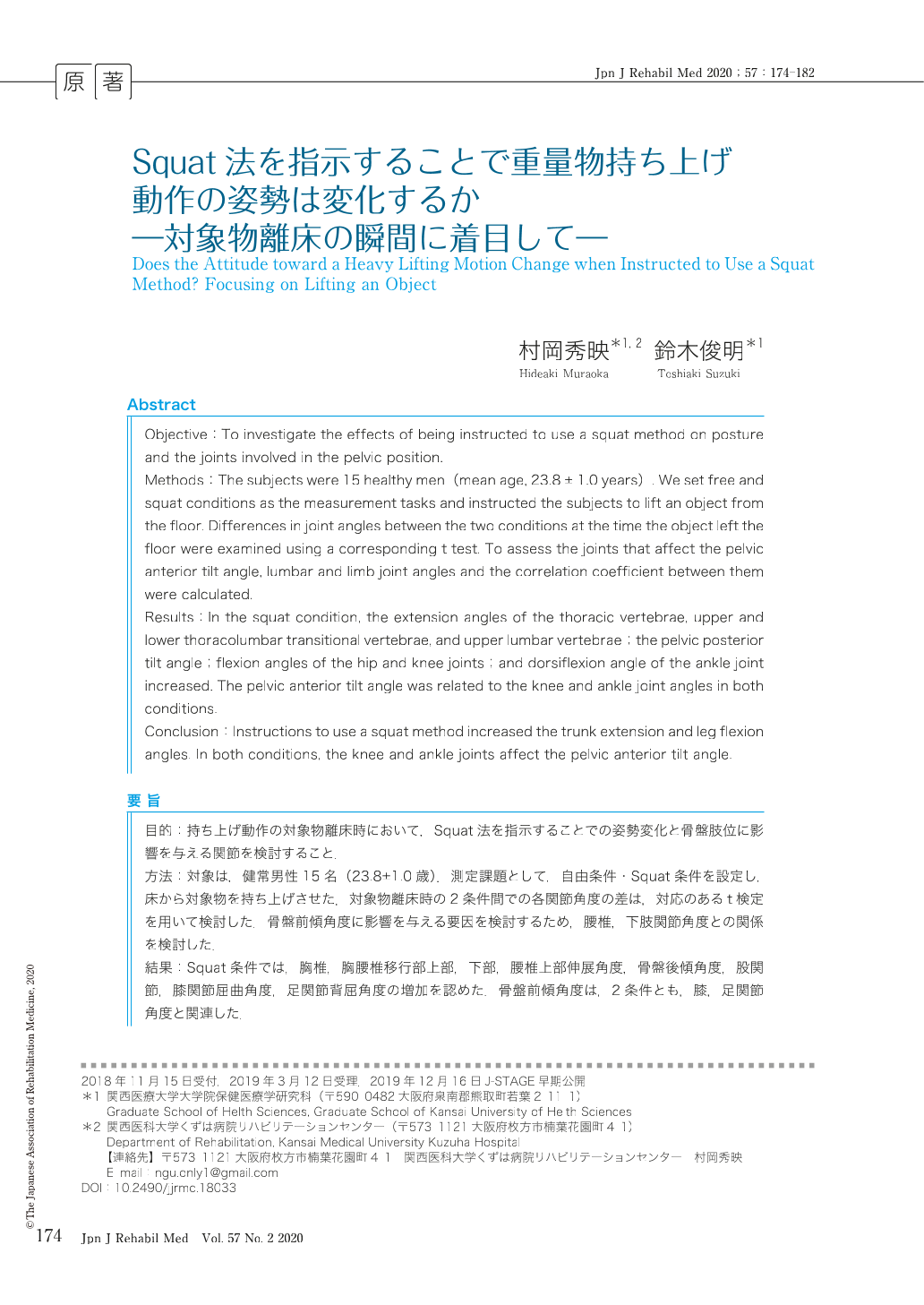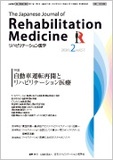Japanese
English
- 販売していません
- Abstract 文献概要
- 1ページ目 Look Inside
- 参考文献 Reference
要旨
目的:持ち上げ動作の対象物離床時において,Squat法を指示することでの姿勢変化と骨盤肢位に影響を与える関節を検討すること.
方法:対象は,健常男性15名(23.8±1.0歳).測定課題として,自由条件・Squat条件を設定し,床から対象物を持ち上げさせた.対象物離床時の2条件間での各関節角度の差は,対応のあるt検定を用いて検討した.骨盤前傾角度に影響を与える要因を検討するため,腰椎,下肢関節角度との関係を検討した.
結果:Squat条件では,胸椎,胸腰椎移行部上部,下部,腰椎上部伸展角度,骨盤後傾角度,股関節,膝関節屈曲角度,足関節背屈角度の増加を認めた.骨盤前傾角度は,2条件とも,膝,足関節角度と関連した.
結論:Squat法を指示することで,体幹伸展,下肢屈曲角度は増加する.2条件とも,膝関節と足関節肢位が骨盤前傾角度に影響する.
Objective:To investigate the effects of being instructed to use a squat method on posture and the joints involved in the pelvic position.
Methods:The subjects were 15 healthy men (mean age, 23.8 ± 1.0 years).We set free and squat conditions as the measurement tasks and instructed the subjects to lift an object from the floor. Differences in joint angles between the two conditions at the time the object left the floor were examined using a corresponding t test. To assess the joints that affect the pelvic anterior tilt angle, lumbar and limb joint angles and the correlation coefficient between them were calculated.
Results:In the squat condition, the extension angles of the thoracic vertebrae, upper and lower thoracolumbar transitional vertebrae, and upper lumbar vertebrae;the pelvic posterior tilt angle;flexion angles of the hip and knee joints;and dorsiflexion angle of the ankle joint increased. The pelvic anterior tilt angle was related to the knee and ankle joint angles in both conditions.
Conclusion:Instructions to use a squat method increased the trunk extension and leg flexion angles. In both conditions, the knee and ankle joints affect the pelvic anterior tilt angle.

Copyright © 2020, The Japanese Association of Rehabilitation Medicine. All rights reserved.


